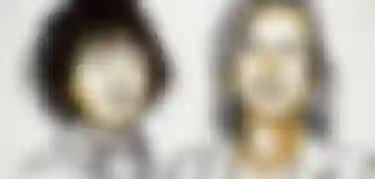Emanuel Carpentier and Jennifer Dodnanobelprize.org, two scientists who won the Nobel Prize in Chemistry in 2020
Emanuel Carpentier and Jennifer Dodner have won this year's Nobel Prize in Chemistry. They discovered one of the most powerful scissors in the world — CRISPR-Cas9. That he is not scissors. With these scissors, the language of the mystery of life can be written in a new way - genes. That is why it is called genetic scissors. Cancer can be treated using these scissors. Genome sequences of any animal or plant can be changed. And this can be done in just a few weeks!

Emanuel Carpentier was then researching a bacterium called Streptococcus pyogenes. These bacteria have caused a lot of suffering to humans. That's why it's important to do research. At this time he discovered a new type of organic molecule. Its name is Tracer RNA. As it turned out, it was a part of the primitive immune system of the bacterium, Crisper-Cas.
Now talking, what is Crisper-Cass 9? More importantly, why is it necessary to prevent bacterial diseases? This is because the virus infects humans as well as bacteria. In both cases there is a complete digestive tract. There are some thorny parts in the body of the virus. Using these thorns, they attach themselves to the cell they want to attack. At this time, they insert their own DNA into the cell like an injection. Carpentier observed that when a virus invades the body of Streptococcus pyogenesis, the bacterium disintegrates the virus's DNA. In this case, Cas9 protein is used as scissors. Now, what will happen to these DNA fragments? What causes Streptococcus pyogenesis is that it puts these fragments in place in its own DNA.
Wondering if the bacteria is crazy? Why put a piece of virus DNA in your own DNA? Because, keep the record! Using these pieces of DNA, the bacterium keeps a record of which virus has attacked it. Later, during the formation of new bacteria, this DNA is copied from bacteria to bacterial cells. This is how the bacterium protects itself from the virus.
The part of the virus's DNA that attaches to the part of the bacterial DNA is called Clustered Regularly Interspaced Short Palindromic Repeats (CRISPR). Yes, that's how Crisper-Cas 9 came about.
Carpentier published his discovery in 2011. That same year he began working with Jennifer Dodner. The purpose is to find out if Crisper can be used as his own. Dodna himself is a biochemist. Together they created these genetic scissors of bacteria in a test tube. With that comes a slight change in the composition of the organic molecule. As a result, it is possible for them to use organic molecules easily.
This time they make some more changes in this molecule. They change the structure of such molecules as can be changed in computer code. In English, they reprogram the genetic scissors. As a result, the scissors used to know only the DNA of the virus, but now they can cut any type of DNA molecule. Their initial work was completed in 2012.
Then began the use of crisper. Scientists began to use it in all important research. High quality crop plants are made by changing the genes of rice or trees. Scientists are also trying to use it in the treatment of cancer. Now its clinical trial is going on.
Crisper is so called magic scissors! The language of the mystery of life can be rewritten by turning that scissors. Emanuel Carpentier and Jennifer Dodna deserve the Nobel for inventing these magic scissors, to say the least!
